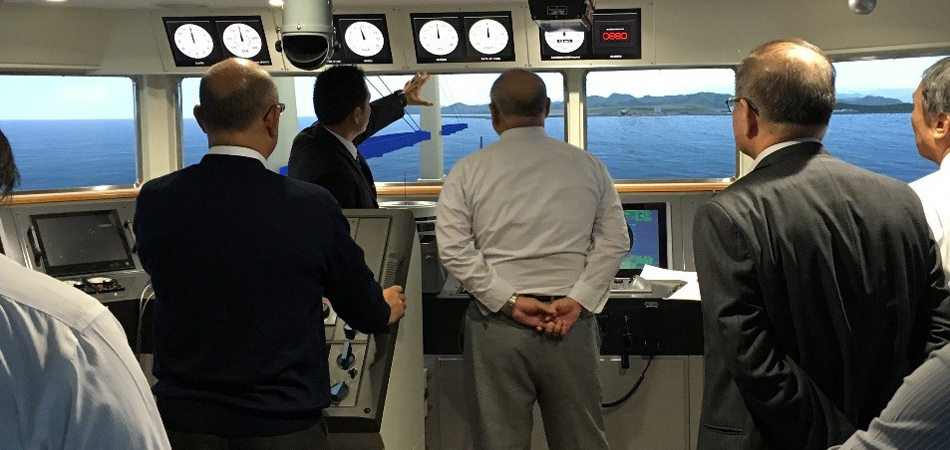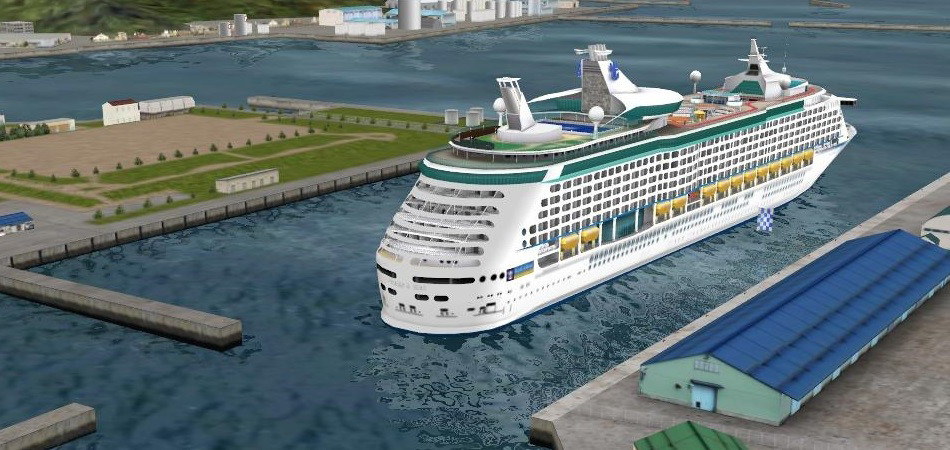Navigation Safety and Disaster Prevention Measures
In order to secure stable distribution and prevent marine pollutions at harbors, it is essential to have an environment in which all ships can safely use water areas. In particular, if an accident occurs on a large ship, the failure to operate the quay, the environmental pollution caused by oil spills and other factors, and the impact on the fishing industry will be enormous.
Since its founding, our company has conducted surveys, evaluations and considered safety measures to ensure the safe use of its ports and water areas.
- Marine accidents such as collisions and stranding by ships cause marine pollution due to the outflow of liquid energy cargoes such as fuel, oil, and LNG, as well as air pollution due to the discharge of volatile liquid cargoes and cargo fires, and their impact on the natural environment and ecosystems will be enormous. In addition, compensation for damage to fishery and other marine users, as well as the impact of marine traffic and marine transportation on the distribution of goods are significant, and the impact on society is immeasurable.
Therefore, it is important to accept ships safely, to plan and maintain port facilities and water area so that all port users, including ships, can use safely, and to formulate safety measures so that marine accidents do not occur at any port.
In our company, scientific methods such as ship maneuvering simulation and mooring motion simulation are used to evaluate the safety of ship maneuvering and mooring, as well as the investigation of port quay facilities and water area. We also propose measures such as support required for safe and secure ports, formulation of operation standards and guidelines, and measures such as facility improvement proposals.
Maneuvering for port entry and departure and navigational safety measures of large ships
In recent years, container ships, cruise ships and other ships making port calls in Japan are increasing in size. However, since it cost enormous time and money to improve domestic port facilities, such as improving quay walls and increasing the depth of water areas, port facilities cannot be built in time for the enlargement of ship types, and the current port facilities are forced to accept larger ships than before, which has raised concerns about navigation safety.
In response to these problems, JMS uses scientific methods such as ship maneuvering simulation and mooring motion simulation to quantitatively evaluate risks on ship maneuvering and mooring limits in mooring facilities, and supports the establishment of measures and standards for safely accepting large ships in existing port facilities.
Maritime disaster prevention measures for specially designated jetties for dangerous cargoes (Tsunami Countermeasures, etc.)
As tankers and LNG carries moored at jetties exclusively used for dangerous goods handle highly flammable cargoes, they are operated under stricter safety standards. Since the wake of the Great East Japan Earthquake, disaster prevention and mitigation countermeasures in the event of earthquakes and tsunamis have been considered for specially designated jetties for dangerous goods.
JMS conducts feasibility studies of continued mooring under the predicted flow conditions during tsunami and measures to strengthen mooring, based on mooring motion simulations. In preparation for the suspension of cargo handling and emergency unberthing during an earthquake, we will examine the maneuvering method for safe unberthing and evacuation out of port with the limited support of tugboats, by ship maneuvering simulation. JMS will also support formulating guidelines including action standards at the time of tsunami occurrence.
Navigation safety measures for port infrastructure development
When new offshore facilities are constructed, such as offshore wind power generation related facilities which are attracting attention as renewable energy in recent years, airport, bridge, and reclamation work, it is necessary to evaluate the impact of offshore construction and installation on navigating ships in advance, and to consider measures to ensure the safety of marine areas.
JMS assesses the safety of the navigation environment by grasping the actual situation of marine traffic through the investigation of the actual situation of ship navigation, and predicting the traffic environment after sharing facilities through simulation. If there is a concern about the influence on the maneuvering of the ship, we will evaluate the maneuvering safety under the future traffic environment by the maneuvering simulation, and propose necessary measures to use the sea area safely.
Business Inquiries
Research & Consulting Group
+81 44-548-9131







